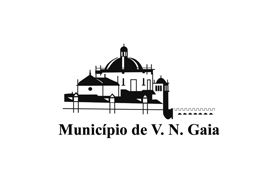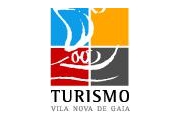TUKTOUR PORTO, Invites you to enter this ancient city that gave its name to Portugal and has a wine known around the world – the Port Wine. Heritage since 1996, the “invincible” is spiritually baroque.
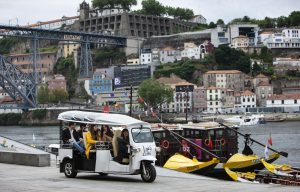 With TUKTOUR PORTO, you discover Aliados Avenue, beautiful avenue, originally named Allied Nations Avenue, which was opened in 1916 after a renovation plan for the city center connecting the Trinity and Liberty squares. You can see among others the statue of Almeida Garrett, writer, poet, speaker, politician who was one of the greatest figures of Portuguese romanticism. He proposed the construction of the National Theatre D. Maria in Lisbon.
With TUKTOUR PORTO, you discover Aliados Avenue, beautiful avenue, originally named Allied Nations Avenue, which was opened in 1916 after a renovation plan for the city center connecting the Trinity and Liberty squares. You can see among others the statue of Almeida Garrett, writer, poet, speaker, politician who was one of the greatest figures of Portuguese romanticism. He proposed the construction of the National Theatre D. Maria in Lisbon.
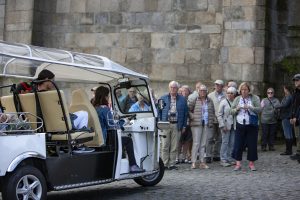 A first look of the church on board our electric tuks “Santo Antonio dos Congregados” that was inaugurated on 8th December 1680 is dedicated to Saint Anthony whose interior murals represent scenes from his life. Its baroque façade of the 17th century is covered “d’azulejos”.
A first look of the church on board our electric tuks “Santo Antonio dos Congregados” that was inaugurated on 8th December 1680 is dedicated to Saint Anthony whose interior murals represent scenes from his life. Its baroque façade of the 17th century is covered “d’azulejos”.
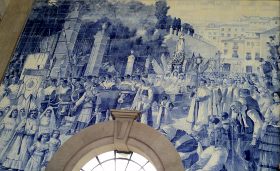 Our guide to TUKTOUR PORTO tells you the story of the station “Estacão São Bento” Built in early twentieth century under the reign of Carlos D. Da and Amelia where stood the convent of Saint Benedict Ave Maria, the inauguration took place in 1896, while the official opening of the line was November 7, 1916. A cover designed glass and cast iron The architect Marques da Silva.
Our guide to TUKTOUR PORTO tells you the story of the station “Estacão São Bento” Built in early twentieth century under the reign of Carlos D. Da and Amelia where stood the convent of Saint Benedict Ave Maria, the inauguration took place in 1896, while the official opening of the line was November 7, 1916. A cover designed glass and cast iron The architect Marques da Silva.
 TUKTOUR PORTO,suggests a break at “Se Catedral” Romanesque whose construction began in the 12th century. It is the oldest monument in Porto. Some say that the first stone was laid by the Queen D. Teresa. Many changes over the centuries have reduced its austere appearance. You can see on its facade a beautiful rosette of the 13th century, its marble interior and paintings of Nasoni.
TUKTOUR PORTO,suggests a break at “Se Catedral” Romanesque whose construction began in the 12th century. It is the oldest monument in Porto. Some say that the first stone was laid by the Queen D. Teresa. Many changes over the centuries have reduced its austere appearance. You can see on its facade a beautiful rosette of the 13th century, its marble interior and paintings of Nasoni.
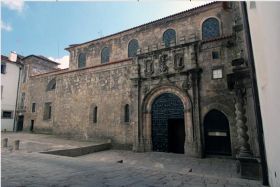 Then the Church of “Santa Clara” “Igreja de Santa Clara” , gothic origin built in the 15th century whose interior was covered with gold leaves in the first half of the eighteenth century. The foundation of the convent of Santa Clara in Porto was held March 28, 1416. A harmonious combination of gilded wood carvings and tiles reign in this church.
Then the Church of “Santa Clara” “Igreja de Santa Clara” , gothic origin built in the 15th century whose interior was covered with gold leaves in the first half of the eighteenth century. The foundation of the convent of Santa Clara in Porto was held March 28, 1416. A harmonious combination of gilded wood carvings and tiles reign in this church.
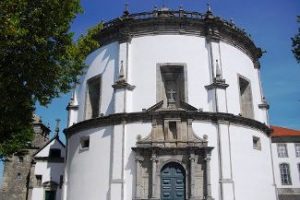 We will cross the river Douro by Infante bridge to reach Vila Nova de Gaia and its magnificent Monastery Serra do Pilar a unique perspective of the bridge on Luis 1st bridge Built between 1881 and 1886 by the engineer Théophile Seyrigby Gustave Eiffel and Maria Pia bridge , built by Gustave Eiffel
We will cross the river Douro by Infante bridge to reach Vila Nova de Gaia and its magnificent Monastery Serra do Pilar a unique perspective of the bridge on Luis 1st bridge Built between 1881 and 1886 by the engineer Théophile Seyrigby Gustave Eiffel and Maria Pia bridge , built by Gustave Eiffel
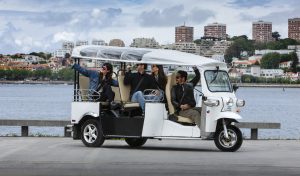 Back aboard our Tuk Tuks we’ll return to Porto The place Batalha and the théâtre São João du XIXe century, Santa Catarina road and the famous “Majestic cafe” from 1920 in a neo classic style where a part of the city’s history was written. We go back to “Carmo Church” 18th century passing through Liberdade Square, In 1911 the front side was coated with a panel of blue and white “azulejos ” representing the imposition of the Scapular Mont “Carmelo ” the Virgin Mary.
Back aboard our Tuk Tuks we’ll return to Porto The place Batalha and the théâtre São João du XIXe century, Santa Catarina road and the famous “Majestic cafe” from 1920 in a neo classic style where a part of the city’s history was written. We go back to “Carmo Church” 18th century passing through Liberdade Square, In 1911 the front side was coated with a panel of blue and white “azulejos ” representing the imposition of the Scapular Mont “Carmelo ” the Virgin Mary.
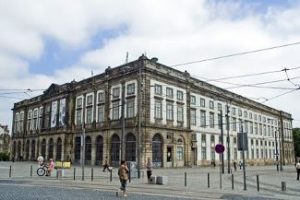 TUKTOUR PORTO, takes you to Reitoria Square and The Science faculty “Faculdade de Ciencias” neo classical style Gomes Teixeira Square. Its construction began during the reign of D. João VI and ended in the nineteenth century. Inside, are Veloso Salgado’s paintings made in 1917. In 1651, the priest “Padre Baltazar Guedes ” founded the Seminario dos Meninos Orfaos. Then have followed the Real Academia da Marinha do Comercio e, Academia Politecnica.
TUKTOUR PORTO, takes you to Reitoria Square and The Science faculty “Faculdade de Ciencias” neo classical style Gomes Teixeira Square. Its construction began during the reign of D. João VI and ended in the nineteenth century. Inside, are Veloso Salgado’s paintings made in 1917. In 1651, the priest “Padre Baltazar Guedes ” founded the Seminario dos Meninos Orfaos. Then have followed the Real Academia da Marinha do Comercio e, Academia Politecnica.
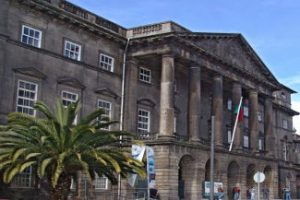 Are also installed in this building. The “Museu de Zoologia (D.Augusto Nobre), as well as The “Museu de Arqueologia e Pré-Historia do Instituto de Antropologia (Dr Mendes Correia), and also The “Museu de Ciências Geológicas (organised by D. Venceslau de Sousa Pereira Lima) and to Santo Antonio hospital 19th century neo classical style.
Are also installed in this building. The “Museu de Zoologia (D.Augusto Nobre), as well as The “Museu de Arqueologia e Pré-Historia do Instituto de Antropologia (Dr Mendes Correia), and also The “Museu de Ciências Geológicas (organised by D. Venceslau de Sousa Pereira Lima) and to Santo Antonio hospital 19th century neo classical style.
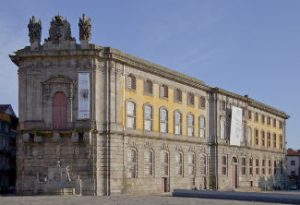 Then The museum of photography “Centro Português de Fotografia”former prison of the 18th century, and new stop with TUKTOUR PORTO at/to the Lello bookshop, Gothic inspiration founded in 1904, dedicated to literature in a magnificent library in the center of which stands the carved wooden staircase that inspired a scene from Harry Potter.
Then The museum of photography “Centro Português de Fotografia”former prison of the 18th century, and new stop with TUKTOUR PORTO at/to the Lello bookshop, Gothic inspiration founded in 1904, dedicated to literature in a magnificent library in the center of which stands the carved wooden staircase that inspired a scene from Harry Potter.
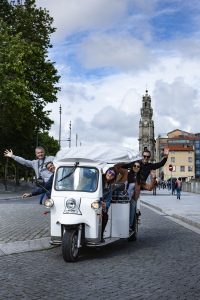 Finally The Clerigos Tower, “Igreja e Torre dos Clérigos” representation of baroque style in the heart of the city, the work of the mid-18th century began exactly its construction in 1732. The interior is made of granite and marble, covered with gilded wood carvings. The internal staircase (225 steps) allows access to the top (76 meters) from where you can admire one of the most beautiful views of Porto. Masterpiece Nicolau Nasoni, Italian painter decorator, fell in love with northern Portugal.
Finally The Clerigos Tower, “Igreja e Torre dos Clérigos” representation of baroque style in the heart of the city, the work of the mid-18th century began exactly its construction in 1732. The interior is made of granite and marble, covered with gilded wood carvings. The internal staircase (225 steps) allows access to the top (76 meters) from where you can admire one of the most beautiful views of Porto. Masterpiece Nicolau Nasoni, Italian painter decorator, fell in love with northern Portugal.
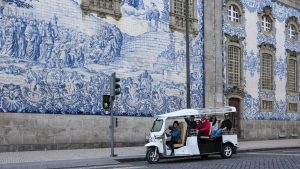 And through the picturesque narrow streets of the Baixa, TUKTOUR PORTO, will take you down towards the church “São Francisco de Assis monument” built in the 14th century, during the reign of Dom Fernando, with an interior entirely covered with gold. Its construction was encouraged by Pope Inocencio IV in 1244, and completed in the fourteenth century. This beautiful church has a similar interest in the majestic Cathedral of Porto. This is one of the most important works of the Baroque era.
And through the picturesque narrow streets of the Baixa, TUKTOUR PORTO, will take you down towards the church “São Francisco de Assis monument” built in the 14th century, during the reign of Dom Fernando, with an interior entirely covered with gold. Its construction was encouraged by Pope Inocencio IV in 1244, and completed in the fourteenth century. This beautiful church has a similar interest in the majestic Cathedral of Porto. This is one of the most important works of the Baroque era.
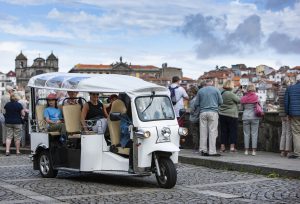 You can admire the “Palacio da Bolsa”. Construction began October 6, 1842, Tuscan and neoclassical architecture of the eighteenth century, as well as English and Arabic influences. Inside the Arab living parallelogram is beautiful.
You can admire the “Palacio da Bolsa”. Construction began October 6, 1842, Tuscan and neoclassical architecture of the eighteenth century, as well as English and Arabic influences. Inside the Arab living parallelogram is beautiful.
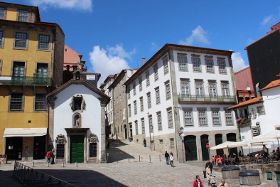 We’ll pass Nova da Alfandega street with its colourful houses and in front the “Casa do Infante” one of the most charismatic buildings of the city where some argue that D.Henrique Infante was born there in 1394.
We’ll pass Nova da Alfandega street with its colourful houses and in front the “Casa do Infante” one of the most charismatic buildings of the city where some argue that D.Henrique Infante was born there in 1394.
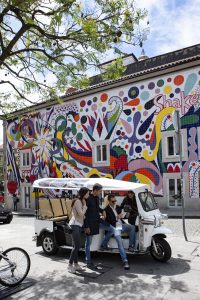 Opposite, The church “Igreja São Nicolau” dates from 1671 and coated in “azulejos” in 1861. Inside you will see among others a chalice of the sixteenth century. We’ll reach the Clerigos tower by the street Mouzinho da Silveira and Belmonte street.
Opposite, The church “Igreja São Nicolau” dates from 1671 and coated in “azulejos” in 1861. Inside you will see among others a chalice of the sixteenth century. We’ll reach the Clerigos tower by the street Mouzinho da Silveira and Belmonte street.
And so our Baroque tour will finish !
Book Now






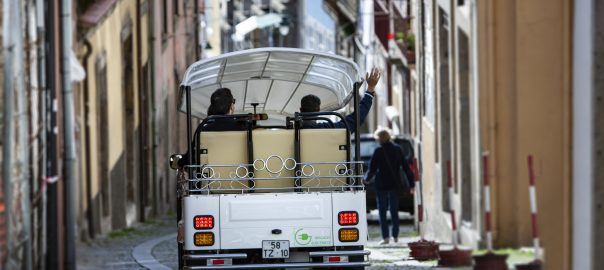
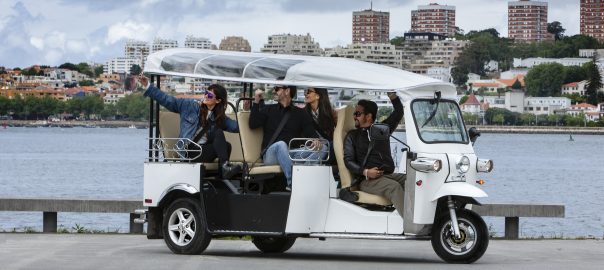
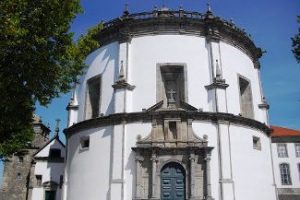 TUKTOUR PORTO will drive you At the top of Serra du Pilar to visit the monastery, listed as a UNESCO World Heritage in December 1996 Serra do Pilar Monastery, ex-libris de Gaia, has preserved its church and cloister, in a circular plan, single copy in Portugal. The church is a replica of the church of Santa Maria Redonda, in Rome, and is covered by a hemispherical dome.
TUKTOUR PORTO will drive you At the top of Serra du Pilar to visit the monastery, listed as a UNESCO World Heritage in December 1996 Serra do Pilar Monastery, ex-libris de Gaia, has preserved its church and cloister, in a circular plan, single copy in Portugal. The church is a replica of the church of Santa Maria Redonda, in Rome, and is covered by a hemispherical dome.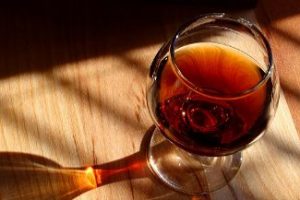 TUKTOUR PORTO share with you the passion for Port wines, come taste with TUKTOUR PORTO, some of these wines, and share with a great brand, a memorable moment. you can visit the cellars, taste the different Port wineslunch in the winery restaurant, and do your shopping.
TUKTOUR PORTO share with you the passion for Port wines, come taste with TUKTOUR PORTO, some of these wines, and share with a great brand, a memorable moment. you can visit the cellars, taste the different Port wineslunch in the winery restaurant, and do your shopping.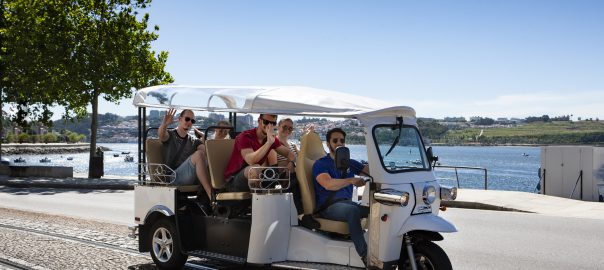
 Starting at Ribeira de Vila Nova de Gaia cellars located on the left bank of the river Douro, river which rises in Spain in the province of Soria, 2080 meters above the sea level, runs through Portugal and empties into the Atlantic. The city has experienced great prosperity in the 18th century and so far hosts the biggest Porto wine cellars whose activity dates back to 1692.
Starting at Ribeira de Vila Nova de Gaia cellars located on the left bank of the river Douro, river which rises in Spain in the province of Soria, 2080 meters above the sea level, runs through Portugal and empties into the Atlantic. The city has experienced great prosperity in the 18th century and so far hosts the biggest Porto wine cellars whose activity dates back to 1692.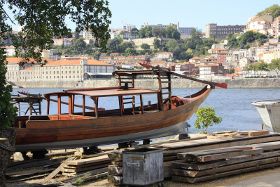 From our point of sale in front of the cellar Ramos Pinto, we will begin our ecological journey by the discovery of flat-bottomed boats “Rabelos” 10th century that were used to descend the wine barrels in the spring. June 24, Feast of S.João (St. John), a regatta is organized with these old boats.
From our point of sale in front of the cellar Ramos Pinto, we will begin our ecological journey by the discovery of flat-bottomed boats “Rabelos” 10th century that were used to descend the wine barrels in the spring. June 24, Feast of S.João (St. John), a regatta is organized with these old boats.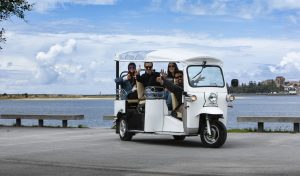 We pass under the concrete bridge mesuring 615 meters long and 27 meters wide “Ponte da Arrábida” which connects the South to the North of Portugal and has a significant development for the whole country. This project was conducted by the engineer Edgar Cardoso and inaugurated on 22 June 1963.
We pass under the concrete bridge mesuring 615 meters long and 27 meters wide “Ponte da Arrábida” which connects the South to the North of Portugal and has a significant development for the whole country. This project was conducted by the engineer Edgar Cardoso and inaugurated on 22 June 1963. Then the typical fishermen village São Pedro da Afurada known for its traditions and among others for its festival in honor of São Pedro (St. Peter), patron saint of fishermen in the end of June. Stroll the cobblestone lined streets of houses tiled with azulejos, you will enjoy eat the catch of the day and notably grilled sardines served with « Broa de Avintes» under the watchful eye of this fishing community.
Then the typical fishermen village São Pedro da Afurada known for its traditions and among others for its festival in honor of São Pedro (St. Peter), patron saint of fishermen in the end of June. Stroll the cobblestone lined streets of houses tiled with azulejos, you will enjoy eat the catch of the day and notably grilled sardines served with « Broa de Avintes» under the watchful eye of this fishing community.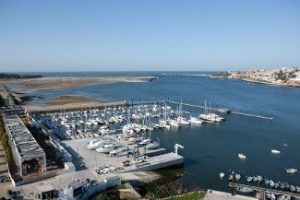 The Marina do Douro “Douro Marina” is a marina with 300 moorings for boats. This is a new concept that unites sport, leisure, tourism and nature in an innovative range of services and activities, aimed at resting sailors but also for boat lovers.
The Marina do Douro “Douro Marina” is a marina with 300 moorings for boats. This is a new concept that unites sport, leisure, tourism and nature in an innovative range of services and activities, aimed at resting sailors but also for boat lovers.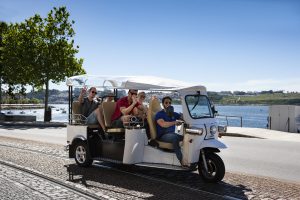 The natural reserve of the estuary of the DouroThis is a real richness, 7 kms from Pont Luis I, Cabedelo and Baia de S.Paio. The protection of birds and flora are the main objectives of this “station “. Migratory birds coming from Africa and Scandinavia can be found in this bird sanctuary, a protected area, a shelter to feed and recover strength before continuing their migration to the Eastern Atlantic area.
The natural reserve of the estuary of the DouroThis is a real richness, 7 kms from Pont Luis I, Cabedelo and Baia de S.Paio. The protection of birds and flora are the main objectives of this “station “. Migratory birds coming from Africa and Scandinavia can be found in this bird sanctuary, a protected area, a shelter to feed and recover strength before continuing their migration to the Eastern Atlantic area.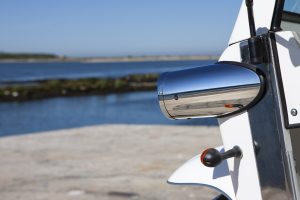 The Lavadores beach “Bandeira azul” . Vila Nova de Gaia offers 15 km of walking trails along the Atlantic from the beach of Lavadores “Bandeira Azul ” to Espinho.
The Lavadores beach “Bandeira azul” . Vila Nova de Gaia offers 15 km of walking trails along the Atlantic from the beach of Lavadores “Bandeira Azul ” to Espinho.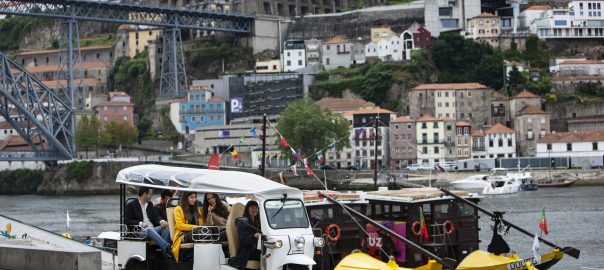
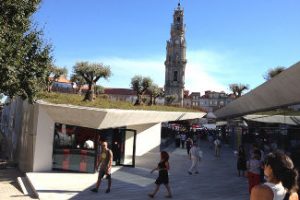 Our walk will begin at our point of sale at Clerigos , we will pass Aliados Avenue, initially named Allied Nations Avenue has been opened in 1916 after a renovation plan for the city center, connecting the squares of Trindade and Liberdade. You can see, among others, the statue of Almeida Garrett Writer, poet, orator, politician who was one of the greatest figures of Portuguese romanticism and the statue of Dom Pedro IV.
Our walk will begin at our point of sale at Clerigos , we will pass Aliados Avenue, initially named Allied Nations Avenue has been opened in 1916 after a renovation plan for the city center, connecting the squares of Trindade and Liberdade. You can see, among others, the statue of Almeida Garrett Writer, poet, orator, politician who was one of the greatest figures of Portuguese romanticism and the statue of Dom Pedro IV.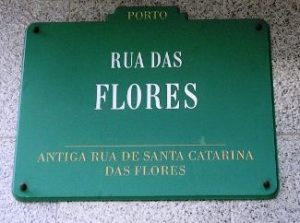 We wander down the picturesque Street of Flowers “Rua das Flores” originally called “Rua de Santa Catarina das Flores ” taking into account its many gardens and orchards. It was open to 16th century, in 1518, by King Manuel I to decongest the city. Paved in 1542, it became one of the main arteries of the city, chosen by the nobles, bourgeois, many traders and goldsmiths to build magnificent houses with beautiful balconies.
We wander down the picturesque Street of Flowers “Rua das Flores” originally called “Rua de Santa Catarina das Flores ” taking into account its many gardens and orchards. It was open to 16th century, in 1518, by King Manuel I to decongest the city. Paved in 1542, it became one of the main arteries of the city, chosen by the nobles, bourgeois, many traders and goldsmiths to build magnificent houses with beautiful balconies.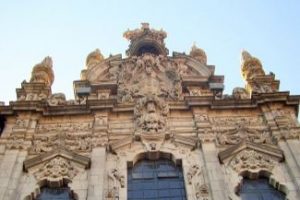 In this narrow alley, and where you can still find hectic goldsmiths and magnificent buildings, including Baroque church of Mercy “Igreja da Misericordia “In 1555, the Brotherhood of Our Lady of Mercy “Nossa senhora da Misericórdia” was placed in the chapel of S. Tiago in the cloister of the Cathedral of Porto. In 1748 the walls have been reinforced, new vaults built as well as the facade of Nicolau Nasoni, very rich in decorative elements.
In this narrow alley, and where you can still find hectic goldsmiths and magnificent buildings, including Baroque church of Mercy “Igreja da Misericordia “In 1555, the Brotherhood of Our Lady of Mercy “Nossa senhora da Misericórdia” was placed in the chapel of S. Tiago in the cloister of the Cathedral of Porto. In 1748 the walls have been reinforced, new vaults built as well as the facade of Nicolau Nasoni, very rich in decorative elements.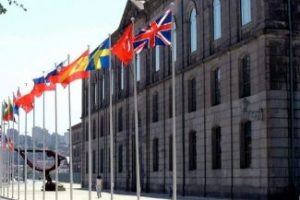 Then by Belmonte street and its picturesque narrow streets, we reach the Nova de Alfandega street and the Congress Palace “Palacio dos Congressos”, the former border customs “Alfândega”, where our tour will go towards the romantic Foz do Douro, borded by its coloured houses.
Then by Belmonte street and its picturesque narrow streets, we reach the Nova de Alfandega street and the Congress Palace “Palacio dos Congressos”, the former border customs “Alfândega”, where our tour will go towards the romantic Foz do Douro, borded by its coloured houses.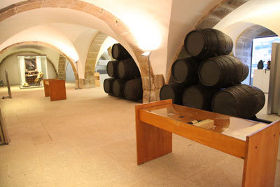
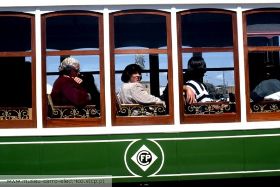 In the Porto Electric Car Museum of STCP “Museu do Carro Électrico do STCP” opened in 1992 you will see an impressive collection of electric cars and others who have marked the history of urban transport in the city.
In the Porto Electric Car Museum of STCP “Museu do Carro Électrico do STCP” opened in 1992 you will see an impressive collection of electric cars and others who have marked the history of urban transport in the city.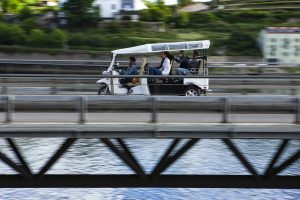 From our stop at Foz Castle “Castelo da Foz”, built during the regency of D.Catarina at the end of the sixteenth century to defend the coast and the entrance to the Douro, a beautiful pedestrian promenade by the sea is waiting for you where you’ll find the Cheese Castle “Castelo do Queijo ” and its beach with a range of 140 meters dominated by rocky outcrops.
From our stop at Foz Castle “Castelo da Foz”, built during the regency of D.Catarina at the end of the sixteenth century to defend the coast and the entrance to the Douro, a beautiful pedestrian promenade by the sea is waiting for you where you’ll find the Cheese Castle “Castelo do Queijo ” and its beach with a range of 140 meters dominated by rocky outcrops.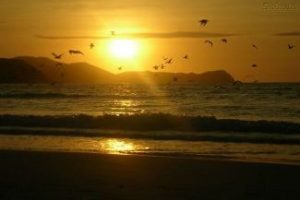 Then you can watch the underwater world in the premises of Sea Life Oceanario. Just a few more metres, and we will reach the beaches of Matosinhos, surfing, and its famous fish restaurants.
Then you can watch the underwater world in the premises of Sea Life Oceanario. Just a few more metres, and we will reach the beaches of Matosinhos, surfing, and its famous fish restaurants.